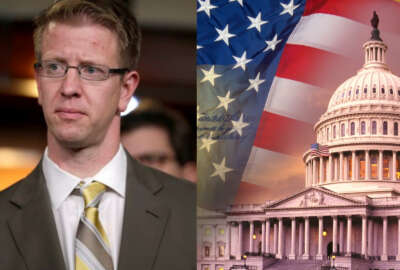Lessons from shutdowns past
Despite coming close in 2011, a government shutdown hasn't occurred since 1996. Frank Reeder, who was director of the Office of Administration of the White House in...
wfedstaff | April 17, 2015 5:34 pm
Congress is coming down to the wire on a deal to fund the government and keep federal agencies operating beyond a Monday- at-midnight deadline.
Despite coming close in 2011, not since 1996 has Congress allowed annual appropriations — or short-term funding measures — to lapse, thus ushering in a government shutdown.
All told, the government remained shuttered for 21 days during that shutdown, and about 284,000 federal employees were forced to stay home, according to a Congressional Research Service report released by the Federation of American Scientists this week.
Some 360 National Park sites closed, more than 200,000 passport applications went unprocessed and National Institutes of Health disease hotlines went unstaffed.
Keeping up morale poses a challenge
Frank Reeder, who was director of the Office of Administration of the White House in the Clinton administration at the time, said one of the most challenging aspects was managing the morale of the federal workforce.
“The hardest thing, of course, was telling people — and the word is, I think, a horrible one — that they were not ‘essential,'” Reeder said in an interview on the Federal Drive with Tom Temin and Emily Kopp.
“‘Essential’ really means excepted from the Antideficiency Act, not whether they are mission-essential,” Reeder said.
The 1884 law bars agencies from obligating funds — to pay employees, for example — if congressional appropriations have lapsed. The law, which was last updated in 1982, also bars employees from volunteering their services during a shutdown.
One of the biggest lessons for employees and managers, alike: “Understand that being told not to come to work does not mean that you are not important to the agency’s mission,” Reeder said.
Federal employees today are likely being confronted with the same issue. Agency supervisors, per Obama administration guidance, are currently advising employees whether they’ll be excepted from furloughs and required to report to work or whether they’ll be forced to stay home.
History not always a reliable guide
But there are also areas where history may not be a reliable guide, he added.
In 1996, all federal workers, both those who were deemed “essential” and required to work through the shutdown and those who were furloughed — ultimately received backpay. But that’s no guarantee this time.
“While I hesitate to make predictions about the political process, history may not be instructive here,” Reeder said. “While in the past, employees who were asked not to come to work because of a shutdown were made whole, I’m not sure in the current climate that that’s going to occur.”
This would also be the first shutdown of the smartphone era, Reeder said.
“All the gadgets and toys that folks have, they won’t be permitted to use, unless they’re performing what is considered to be an excepted activity,” Reeder said. “Employees need to remember that under the Antideficiency Act, you can’t volunteer. You can’t stay connected to the office if you are not performing an activity that is excepted. So this notion that people can work remotely and stay connected and are always on takes on a very different flavor.”
The 21-day shutdown at the end of 1995 and into the early days of 1996 was preceded by a shorter five-day shutdown in November of that year, which affected even more employees — about 800,000, according to the CRS report.
Prior to that, there were at least six funding gaps between 1977 and 1980. But most of these shutdowns lasted for fewer than three days, “and disruptions to the federal operations were minimal,” the report stated.
In fact, up to 1980 many federal agencies didn’t even close their doors when congressional appropriations lapsed, because they believed that Congress didn’t actually intend for them to close in the absence of a funding bill, the report stated. However, legal guidance issued by the Carter administration’s Attorney General, Ben Civiletti, in the early 1980s reinterpreted the Antideficiency Act to require agencies to suspend operations when funding lapses.
That legal rationale is still mostly operational today.
RELATED STORIES:
Latest government shutdown news
Clock ticking down to government shutdown
Agency websites, other technology to go dark during shutdown
Agency-by-agency shutdown guidance
DoD would furlough roughly half of civilian workforce during shutdown
Timeline of government shutdowns past
How budget showdowns could squeeze the US economy
Football vs. Congress: When in doubt, punt
Shutdown poll: Will they or won’t they?‘
Shutdown roulette – what are the real effects on government?
Hagel calls govt shutdown threat ‘shortsighted’
Feds learn furlough status as shutdown looms
Air Force warns industry to expect delayed acquisition decisions
DHS warns contractors about shutdown consequences
Copyright © 2024 Federal News Network. All rights reserved. This website is not intended for users located within the European Economic Area.





